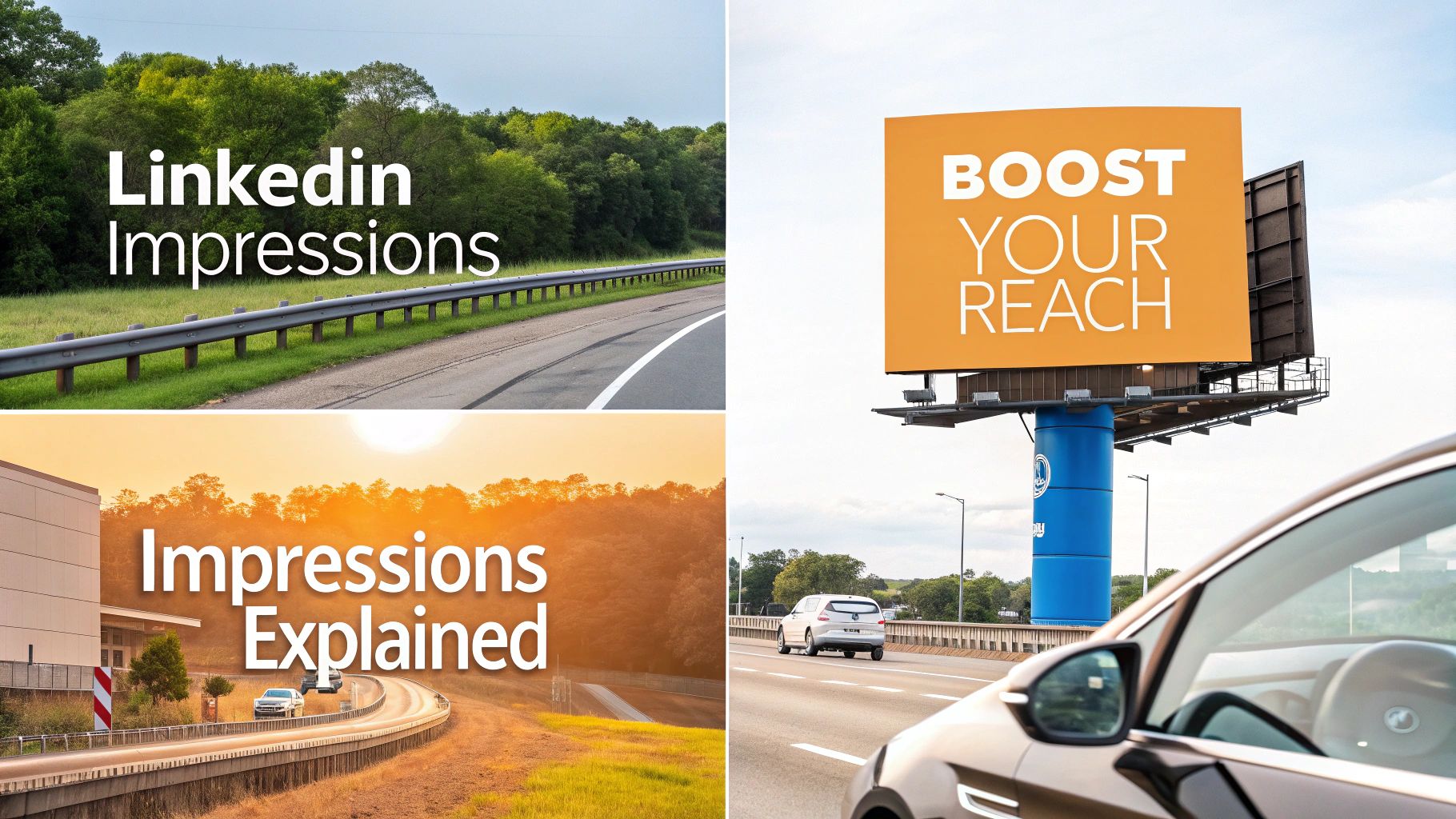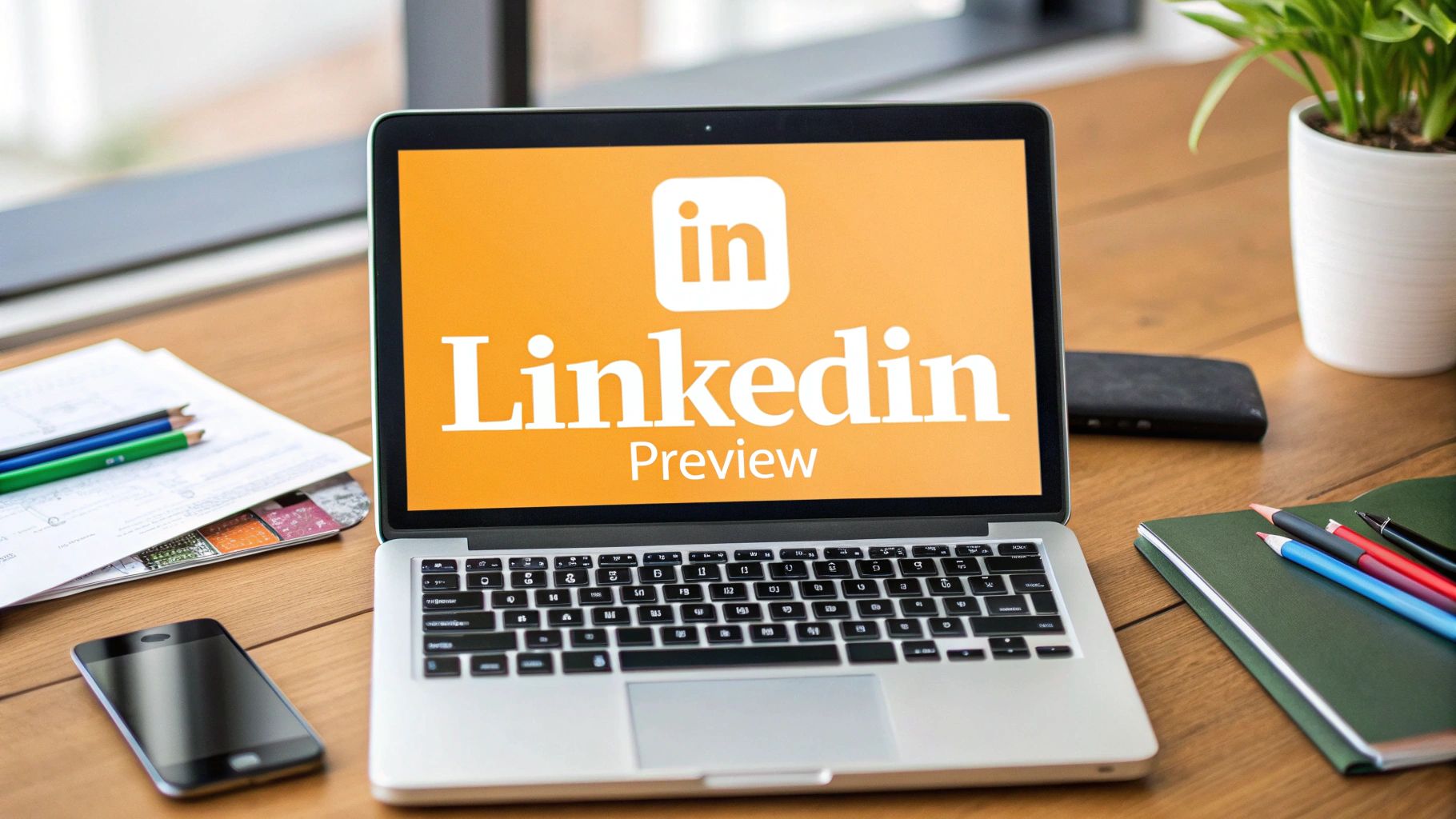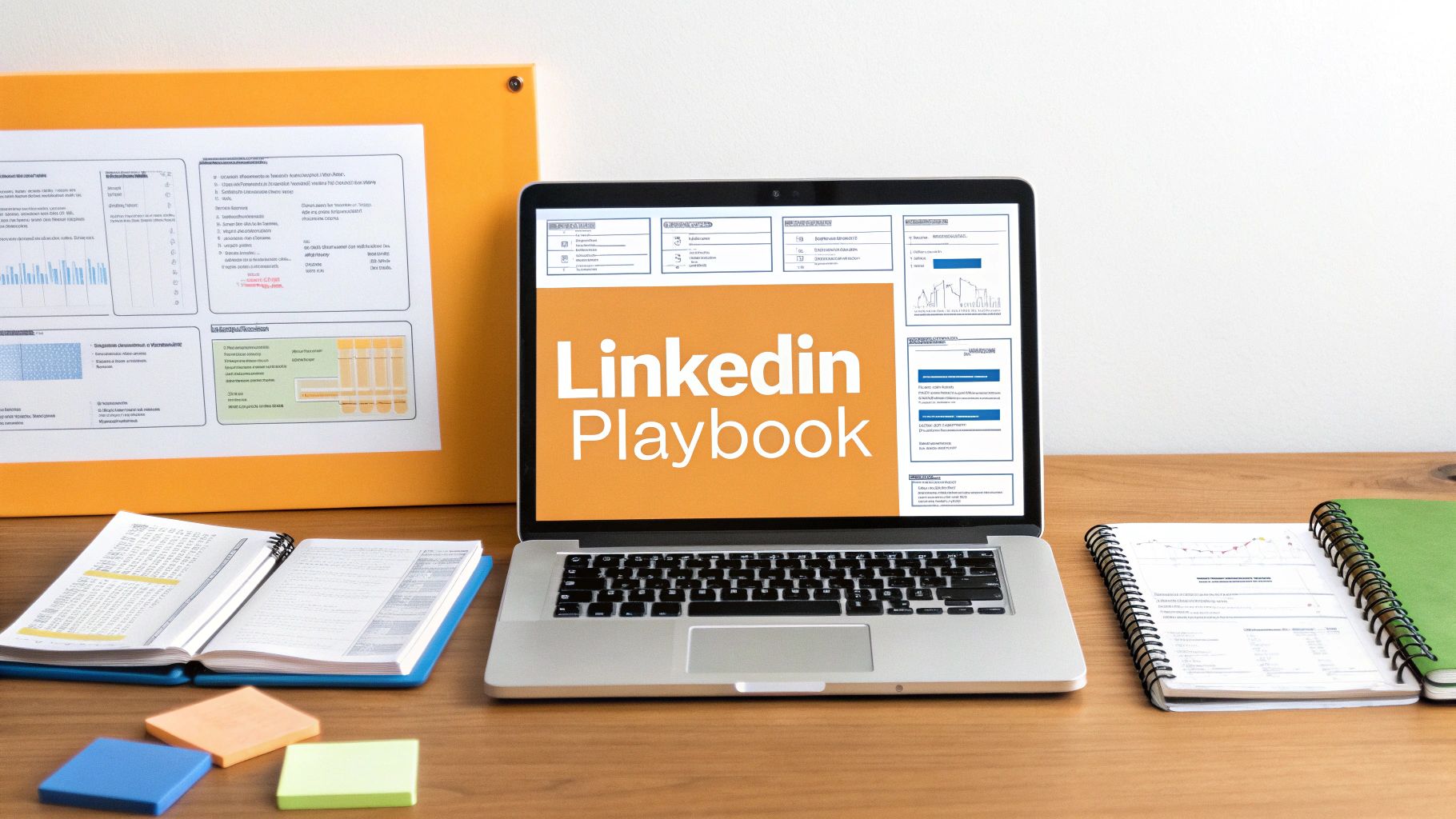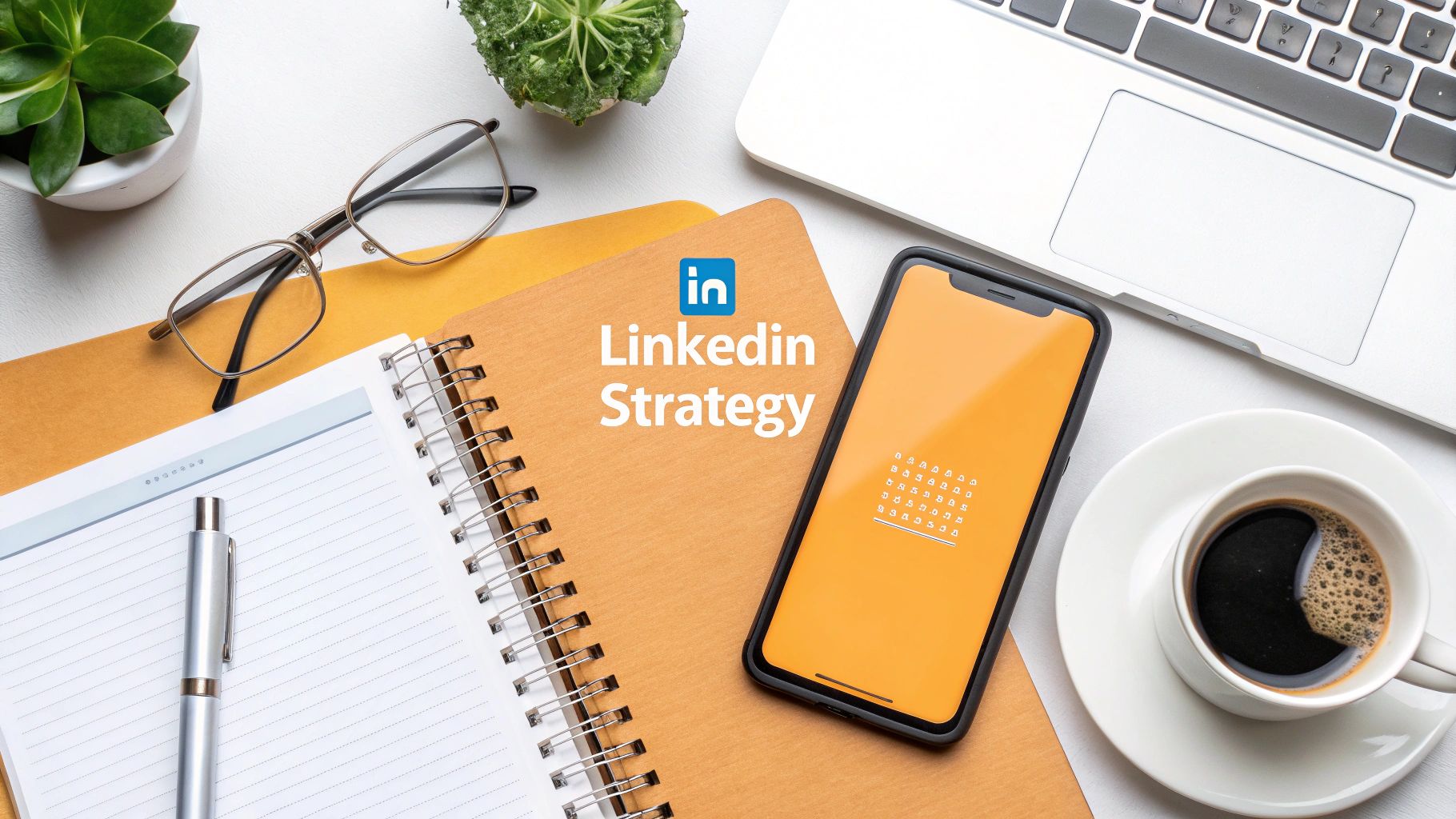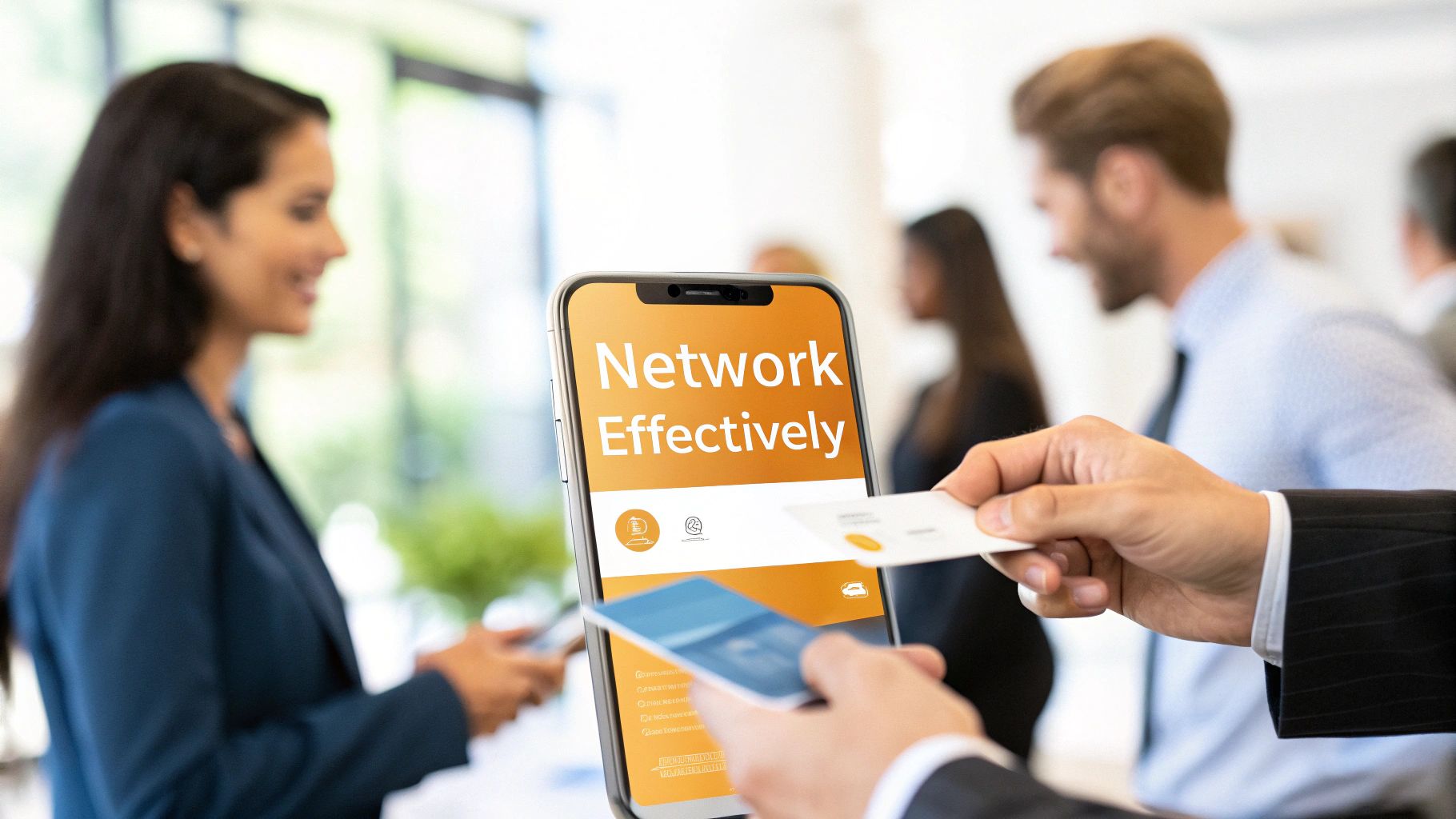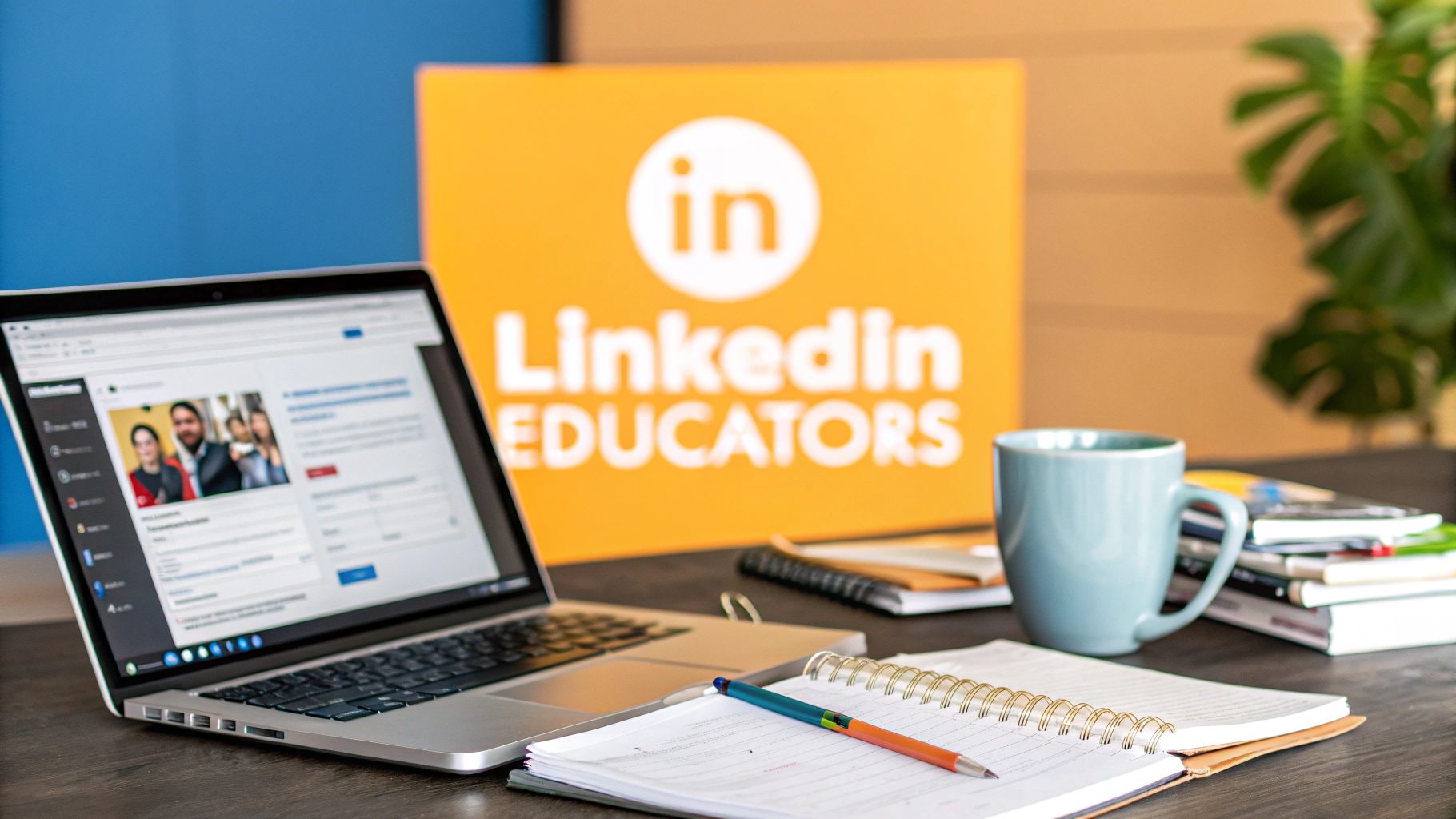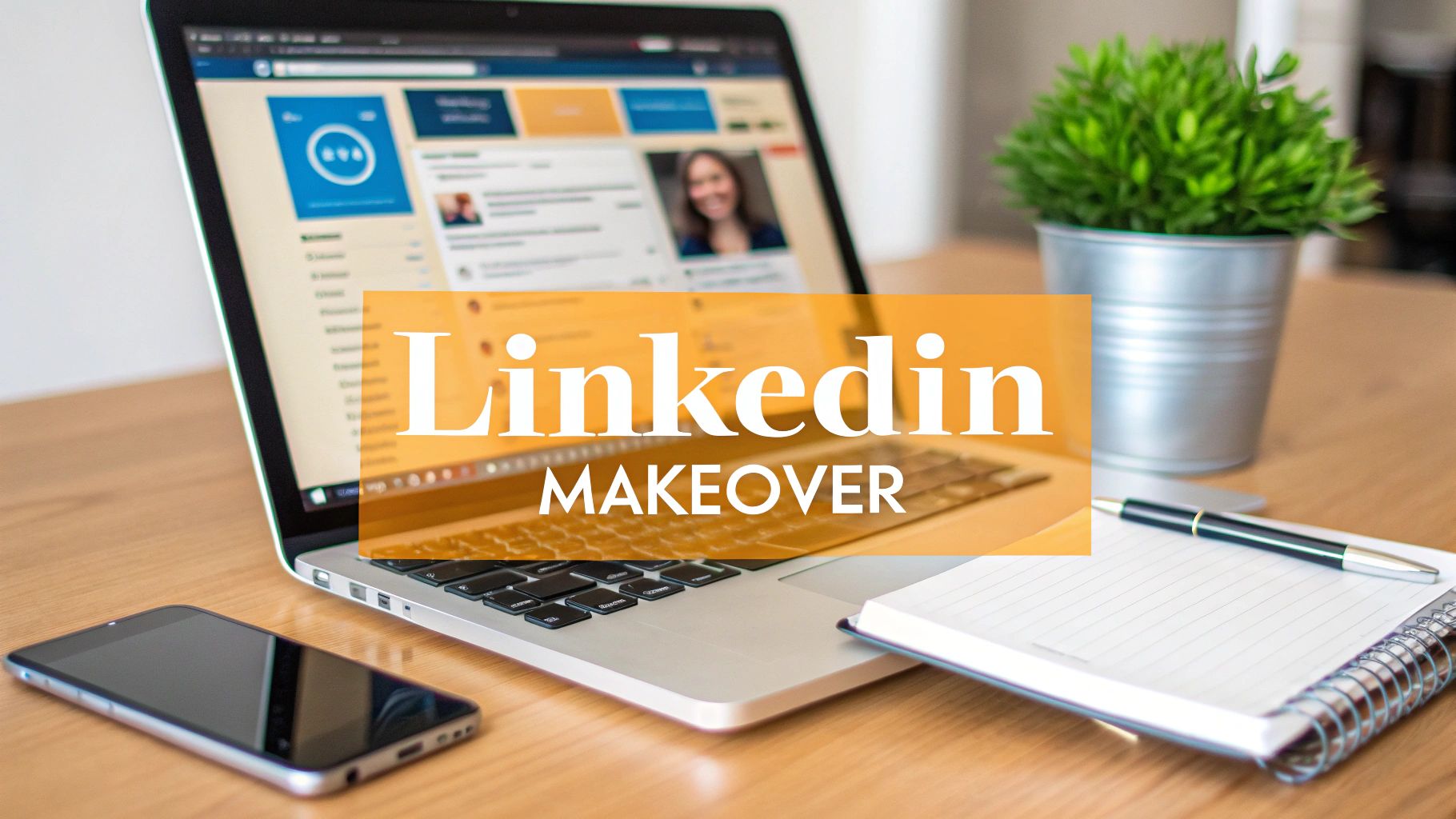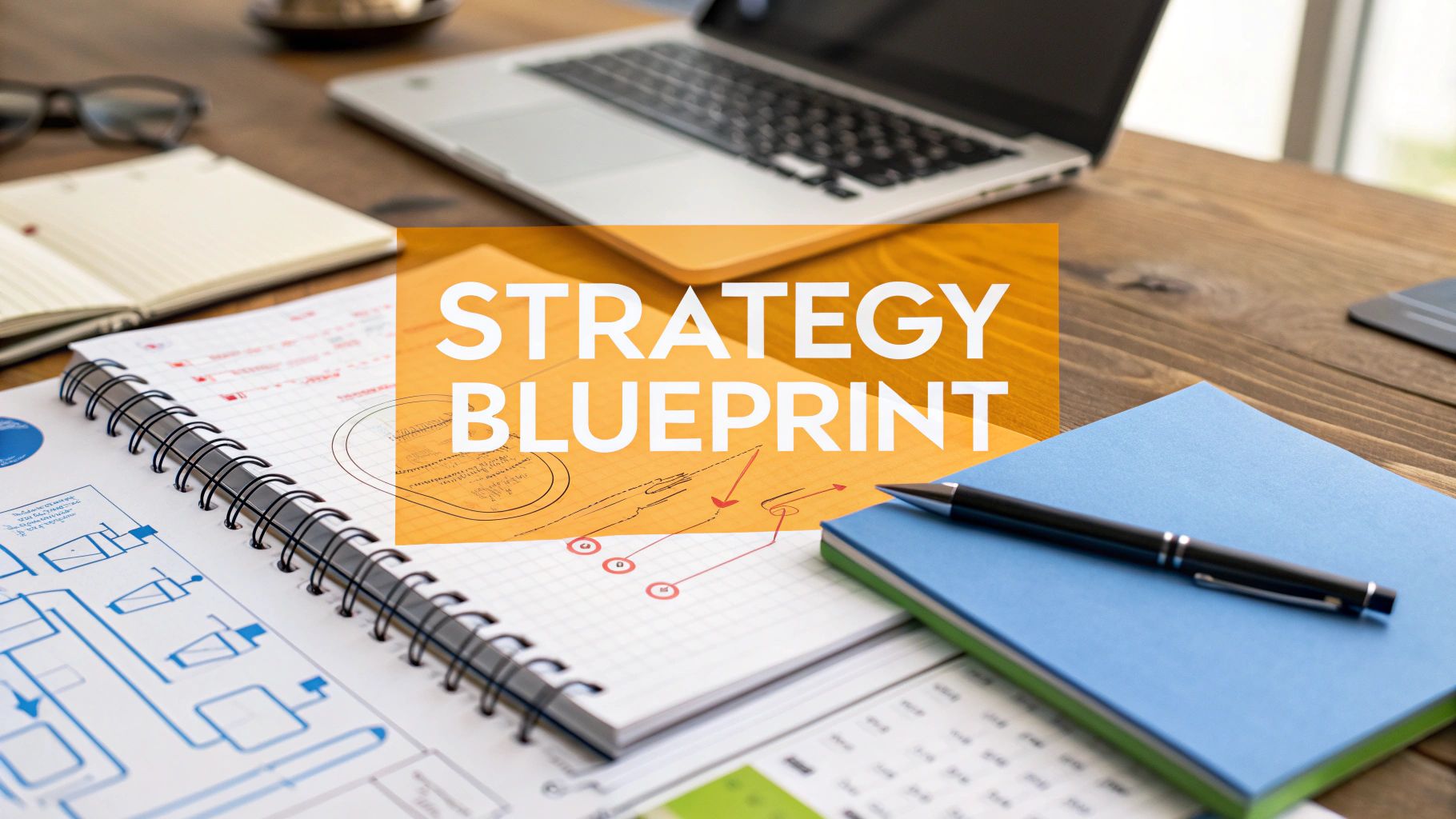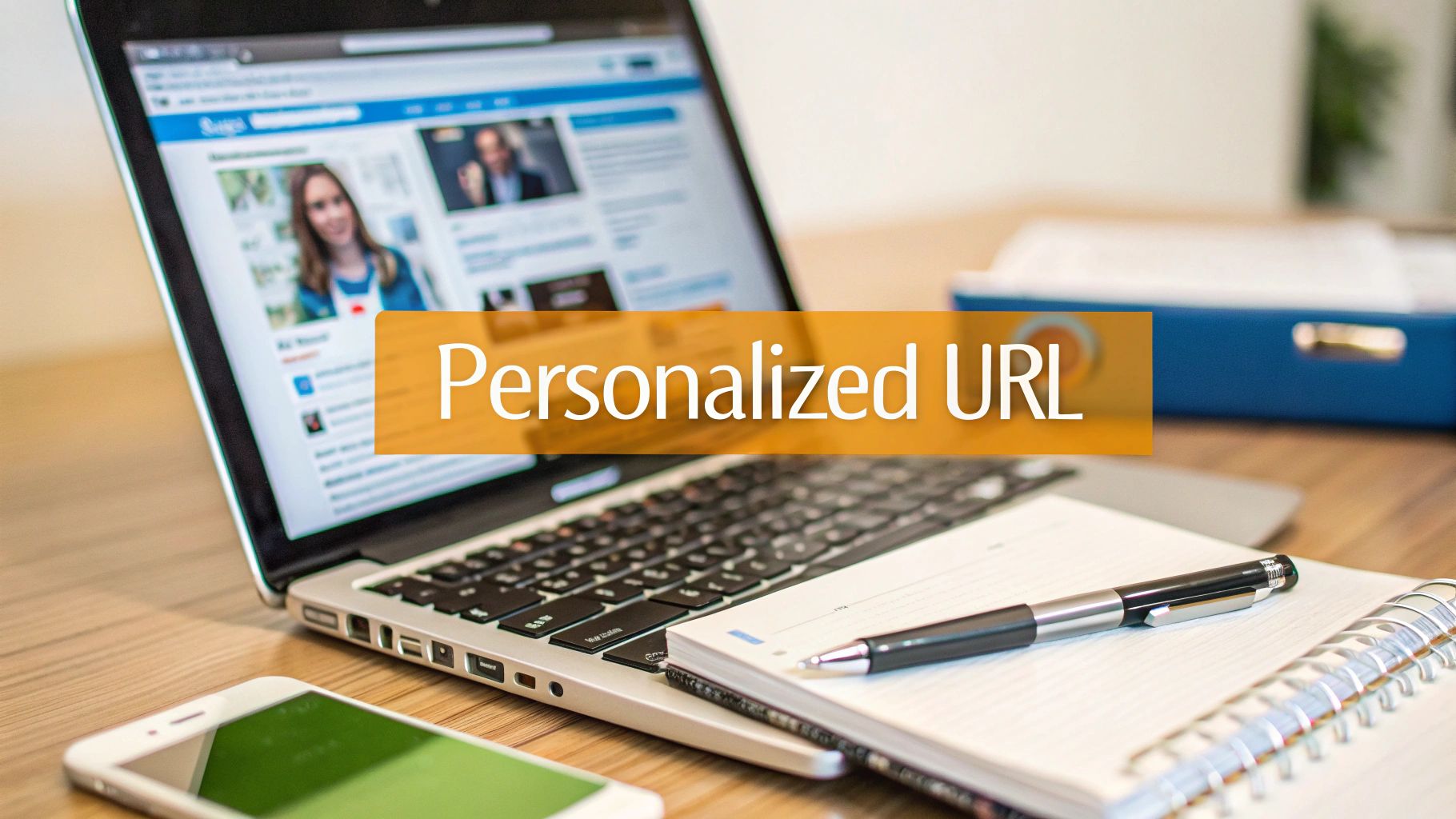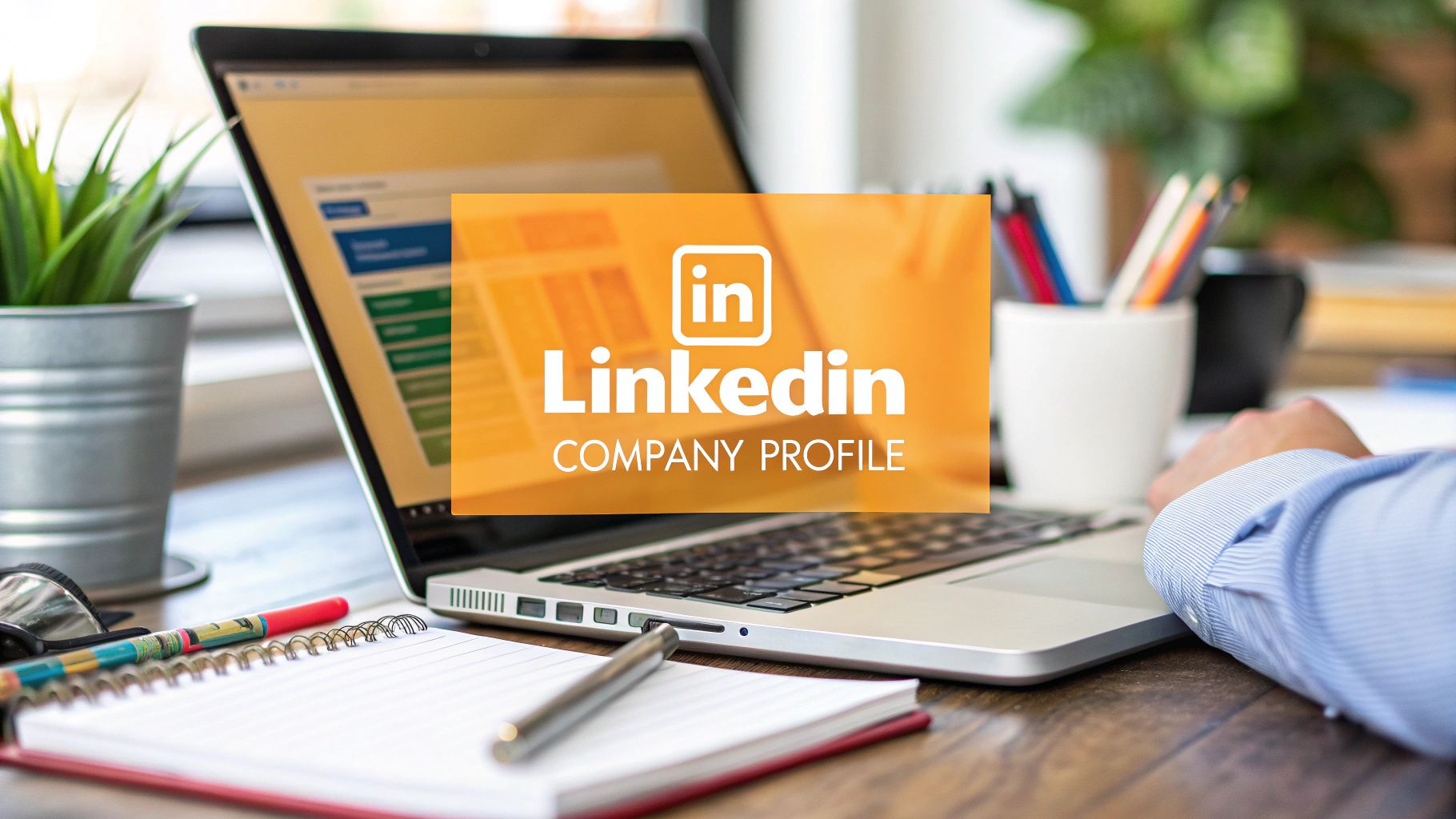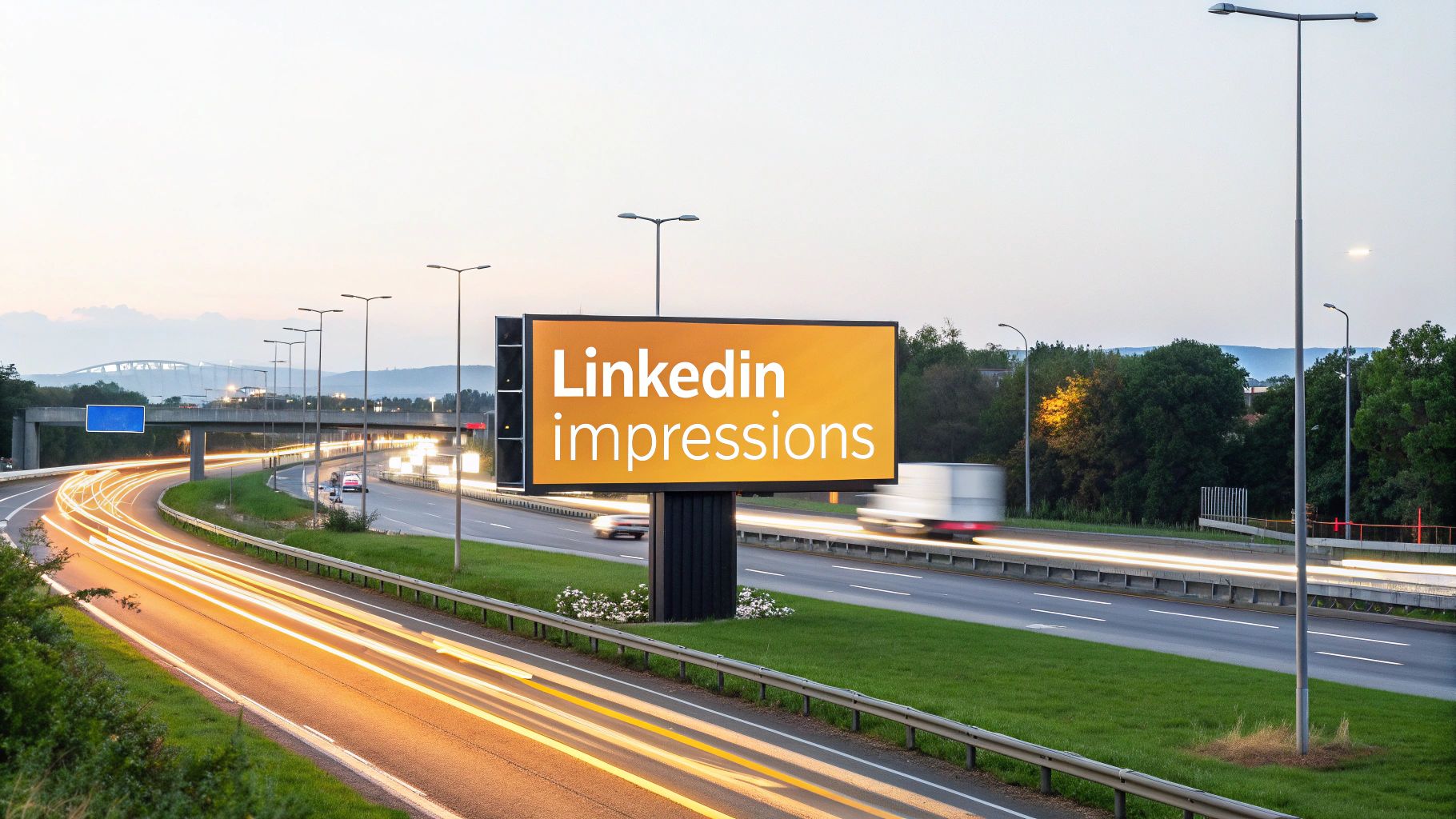In today's hyper-competitive job market, simply offering a good salary isn't enough to attract and keep top-tier talent. The real secret sauce? A powerful Employer Value Proposition (EVP). This is the unique, compelling promise of value a company makes to its employees in return for their skills, capabilities, and experience. It’s the "why" behind working for you, encompassing everything from career growth and company culture to work-life balance and overall impact.
But crafting an effective EVP can feel abstract. How do you translate your company's essence into a message that resonates? The best way to learn is by seeing what works. That’s why we’re cutting through the theory to analyze real-world employer value proposition examples from companies that are nailing it.
This isn't just a list of perks. We're going to dissect the strategy behind each EVP, breaking down exactly why it's so effective. You’ll get a behind-the-scenes look at how leading organizations connect with their ideal candidates and build a loyal workforce. Forget generic mission statements; you're about to get a tactical blueprint to build an EVP that not only turns heads but also convinces the right people to join and stay. Let's dive in.
1. Competitive Compensation and Benefits Packages
A strong employer value proposition example centers on above-market salaries, bonuses, stock options, and robust perks. By bundling financial security with tangible rewards, companies capture top talent and boost retention. This approach works by clearly communicating total compensation value and giving employees choices that fit their lifestyles.
H3 Strategic Analysis
- Market benchmarking keeps pay competitive and aligned with industry shifts
- Performance incentives motivate results without inflating base costs
- Flexible benefits address diverse workforce needs
- Equity programs foster long-term loyalty and ownership mind-set
- Transparent breakdowns build trust and reduce offer resistance
“Employees value seeing the full picture—salary, bonuses, benefits—in one clear package.”
H3 Real World Examples
- Google
- Free meals on campus, comprehensive healthcare, and 401(k) matching
- Google Careers highlights total rewards in every job post
- Microsoft
- Generous base pay plus stock purchase plan at a discount
- Clear dashboards let candidates model long-term wealth
- Meta (Facebook)
- Premium cash compensation plus RSUs vesting over four years
- Quarterly “total comp” statements for transparency
- Apple
- Equity grants tied to performance and tenure
- Choice of health plans and wellness stipends
H3 Actionable Takeaways
- Conduct quarterly market scans using salary survey tools
- Package base pay, bonuses, and equity in one “total comp” sheet
- Offer cafeteria-style benefits so employees pick what matters
- Communicate rewards in job descriptions, interviews, and onboarding
H3 When and Why to Use
Use this EVP example when talent shortages drive up bidding wars or when turnover spikes. It’s ideal for industries where financial security and tangible perks sway hiring decisions and fuel engagement.
2. Career Development and Learning Opportunities
A powerful employer value proposition example is built on providing clear paths for professional growth and continuous learning. By offering mentorship programs, tuition reimbursement, certifications, and defined career ladders, companies attract ambitious talent hungry for skill development. This strategy works by showing employees a long-term future with the organization, not just a job.

H3 Strategic Analysis
- Visible career pathways reduce employee churn and build loyalty
- Upskilling programs close internal skill gaps and boost productivity
- Mentorship fosters a supportive culture and transfers institutional knowledge
- Tuition reimbursement signals a deep investment in employee potential
- Certifications provide tangible proof of skill advancement and expertise
“Today's top talent doesn't just want a paycheck; they want a launchpad for their career.”
H3 Real World Examples
- Amazon
- Its Career Choice program prepays 95% of tuition for in-demand fields
- Amazon's Career Choice empowers warehouse employees to pursue new careers
- Starbucks
- The Starbucks College Achievement Plan offers full tuition coverage for a bachelor's degree
- This benefit is available to all eligible U.S. partners, a key differentiator
- Deloitte
- Deloitte University provides extensive leadership and professional development
- Custom programs are designed for every career level, from new hires to partners
- IBM
- Offers a vast digital learning platform with AI recommendations and thousands of courses
- Emphasizes "new collar" skills and provides pathways to earning valuable digital credentials, turning employees into subject matter experts
H3 Actionable Takeaways
- Map out clear career ladders for key roles and make them transparent
- Partner with universities or platforms like Coursera for discounted learning
- Create a formal mentorship program connecting junior and senior staff
- Celebrate and widely publicize internal promotions to showcase growth
H3 When and Why to Use
Use this EVP example when competing for ambitious, growth-oriented talent or in fast-evolving industries where skills quickly become outdated. It is ideal for organizations where internal mobility and skill enhancement are critical for business success and retaining top performers long-term.
3. Work-Life Balance and Flexible Work Arrangements
A powerful employer value proposition example emphasizes employee autonomy and respect for personal time through flexible schedules and remote work options. By prioritizing work-life integration over rigid office hours, companies attract talent seeking control over their professional and personal lives. This approach works by trusting employees to deliver results regardless of location, demonstrating that the organization values well-being and output over simple presence.

H3 Strategic Analysis
- Remote-first models widen the talent pool globally
- Flexible hours accommodate diverse life stages and personal needs
- Trust-based policies boost morale and employee engagement
- Outcome-focused management shifts focus from hours worked to results achieved
- Reduced commuting time and costs improve employee satisfaction and well-being
“Flexibility isn’t a perk anymore; it’s a core expectation. Companies that build their culture around trust and autonomy will win.”
H3 Real World Examples
- GitLab
- A fully remote-first workforce with no physical offices
- GitLab's Handbook is public, detailing their remote work culture and processes
- Salesforce
- "Success from Anywhere" model offers flex, office-based, and remote options
- Focuses on its "Ohana Culture" to maintain connection and support
- Slack
- Hybrid model empowers teams to decide their in-office cadence
- Invests heavily in digital tools to ensure seamless collaboration
- Patagonia
- Long-standing policy of "Let My People Go Surfing" encourages employees to enjoy the outdoors
- Offers on-site childcare and flexible schedules to support working parents
H3 Actionable Takeaways
- Establish clear guidelines for remote and hybrid work expectations
- Invest in collaboration technology to keep distributed teams connected
- Measure performance based on output and results, not hours logged
- Create intentional rituals for virtual team bonding and connection
H3 When and Why to Use
Use this EVP example when competing for talent in high-demand, knowledge-based industries like tech or creative services. It’s highly effective for attracting a diverse, global workforce and is essential in a post-pandemic world where employee autonomy and well-being are non-negotiable for top candidates.
4. Positive Company Culture and Inclusive Environment
A powerful employer value proposition example emphasizes a welcoming and psychologically safe workplace. By championing belonging and shared values, companies attract talent that seeks more than just a paycheck; they want to be part of a community. This approach works by making diversity, equity, and inclusion (DEI) foundational pillars of the employee experience.
H3 Strategic Analysis
- Authentic mission and values attract and retain mission-aligned employees
- Inclusive hiring practices widen the talent pool and boost innovation
- Psychological safety encourages risk-taking and honest communication
- Employee Resource Groups (ERGs) build community and support networks
- Transparent diversity metrics demonstrate accountability and build trust
“Culture isn't just a buzzword; it’s the operating system for your company. A great one attracts great people.”
H3 Real World Examples
- Salesforce
- Invested millions to close gender and race pay gaps
- Salesforce Equality page showcases ERGs and diversity reports
- Netflix
- Famous culture deck highlights "freedom and responsibility"
- Inclusive benefits cover surrogacy, parental leave, and transgender healthcare
- Accenture
- Publicly shares comprehensive diversity data and goals for leadership
- Mandatory annual training on unconscious bias for all employees
- Patagonia
- Activist culture attracts employees passionate about environmental causes
- On-site childcare and flexible schedules support working parents
H3 Actionable Takeaways
- Measure and report on diversity and inclusion metrics to create accountability
- Empower ERGs with executive sponsors and dedicated budgets
- Embed inclusion into performance reviews, hiring, and promotion processes
- Develop training on microaggressions and psychological safety for all managers
H3 When and Why to Use
Use this EVP example when your company's mission is a key differentiator or when competing in talent markets that value purpose over perks. It is highly effective for attracting younger generations and in creative industries where collaboration and psychological safety are essential for innovation. Beyond structured benefits, fostering a vibrant and supportive atmosphere is key; consider the significant impact and recognized benefits of building a strong office coffee culture to enhance daily interactions. This focus on interpersonal and relationship skills can be a major competitive advantage.
5. Purposeful Work and Mission-Driven Impact
Another powerful employer value proposition example connects employees' daily tasks to a larger, meaningful mission. By embedding social good and tangible impact into its core identity, a company attracts talent passionate about making a difference. This strategy works by showing that the job is more than just a paycheck; it’s a chance to contribute to a cause.

H3 Strategic Analysis
- Authentic mission alignment builds genuine employee advocacy
- Volunteer programs boost morale and team cohesion
- Transparent impact reporting validates the company's commitment
- Employee involvement in social initiatives increases personal investment
- Partnerships with nonprofits lend credibility and amplify reach
“Today’s top talent doesn't just ask what they can do for a company, but what the company does for the world.”
H3 Real World Examples
- Patagonia
- Pledges 1% of sales to environmental preservation and restoration
- Actively supports employee environmental activism, including paid time off
- TOMS
- Pioneered the "One for One" model, donating shoes for every pair sold
- The TOMS Impact Report transparently details its social initiatives
- Salesforce
- Built on a 1-1-1 model: donating 1% of equity, product, and employee time
- Employees receive paid time off for volunteering, fostering community engagement
- Warby Parker
- Operates a "Buy a Pair, Give a Pair" program to distribute glasses worldwide
- Partners with organizations to provide vision care to underserved communities
H3 Actionable Takeaways
- Integrate your mission into your company profile on professional networks; for more on that, learn how to create a standout company profile on LinkedIn.
- Launch a formal volunteer time off (VTO) policy to empower employees
- Publish an annual impact report showcasing social and environmental contributions
- Feature mission-driven stories in recruitment materials and on career pages
H3 When and Why to Use
Use this EVP example when targeting younger generations like Millennials and Gen Z, who prioritize purpose over profit. It is highly effective for B-Corps, social enterprises, and any organization wanting to build a culture rooted in shared values and community contribution.
6. Innovative Tools, Technology, and Autonomy
A powerful employer value proposition example gives employees access to state-of-the-art tools, modern technology, and the autonomy to innovate. By providing a frictionless environment and technical freedom, companies attract top engineers and creatives who want to build, not fight outdated systems. This approach works by demonstrating a commitment to employee productivity and trusting them to choose the best solutions for their work.
Strategic Analysis
- Modern tech stacks reduce friction and boost developer productivity
- Autonomy over tool selection fosters a sense of ownership and empowerment
- Dedicated innovation time (e.g., hackathons) fuels creativity and new product ideas
- Investment in infrastructure signals that the company values high-quality engineering
- Open-source contribution policies attract talent passionate about community and learning
“Top performers want the best tools and the freedom to use them. Removing technical roadblocks is a massive competitive advantage.”
Real World Examples
- Netflix
- Famed for its culture of “Freedom and Responsibility,” giving engineers high autonomy
- Netflix Jobs site emphasizes its unique approach to engineering challenges
- GitHub
- A developer-first culture with access to the latest tools and internal dogfooding
- Encourages remote work and async collaboration, trusting its team with cutting-edge tech
- Google
- Legendary for its "20% Time" policy, allowing engineers to work on passion projects
- Provides access to unparalleled internal infrastructure and research tools
- Stripe
- Focuses intensely on developer experience, both for its customers and its own engineers
- Invests heavily in creating a seamless and powerful internal development platform
Actionable Takeaways
- Budget for regular hardware and software upgrades for all employees
- Establish a clear policy allowing teams to choose their tools within security guardrails
- Schedule dedicated “innovation days” or hackathons each quarter
- Gather employee feedback on the tech stack and infrastructure pain points annually
When and Why to Use
Use this EVP when competing for tech talent, especially engineers, developers, and data scientists. It is most effective for industries where innovation is a key differentiator and employees see their technical environment as a direct reflection of the company’s vision and respect for their craft.
7. Health, Wellness, and Employee Support Programs
A top-tier employer value proposition example prioritizes the holistic wellbeing of its people, extending beyond traditional health insurance. By championing physical and mental health through comprehensive support programs, companies build a resilient, engaged, and productive workforce. This approach works by showing employees they are valued as whole individuals, not just for their output.
H3 Strategic Analysis
- On-site wellness centers reduce barriers to accessing care
- Proactive mental health support normalizes seeking help and prevents burnout
- Fitness benefits and stipends empower employees to manage their own health
- Holistic programs (financial wellness, mindfulness) address diverse life stressors
- Confidential counseling services build psychological safety and trust
“Investing in employee wellbeing isn’t a perk; it’s a core business strategy that drives performance and loyalty.”
H3 Real World Examples
- Cisco
- On-site health centers and fitness programs at major campuses
- Cisco Employee Programs page details mental health support and Mind Set coaching
- Johnson & Johnson
- One of the pioneers, with a century-long commitment to employee health
- Digital platforms offer personalized wellness plans and rewards
- Amazon
- Comprehensive benefits plus free access to mental health resources 24/7
- Focuses on both physical safety and mental wellbeing initiatives
H3 Actionable Takeaways
- Partner with platforms like Calm or Headspace for accessible mindfulness tools
- Implement an Employee Assistance Program (EAP) with confidential counseling
- Offer flexible wellness stipends for gym memberships, classes, or home equipment
- Launch peer support groups or mental health ambassador programs
H3 When and Why to Use
Use this EVP when your industry faces high stress or burnout rates, or when your goal is to cultivate a supportive, long-term culture. It’s ideal for organizations aiming to differentiate themselves by investing in human sustainability and demonstrating a deep commitment to employee care. For comprehensive guidance on supporting your team, explore these effective employee wellbeing strategies.
8. Recognition, Rewards, and Performance-Based Advancement
This employer value proposition example centers on creating a culture where contributions are seen, celebrated, and directly tied to career growth. It promises that hard work and tangible results lead to merit-based advancement and meaningful rewards. This EVP works by building a transparent system where employees understand exactly what they need to do to succeed and get recognized.
H3 Strategic Analysis
- Merit-based advancement removes bias and promotes fairness
- Public recognition programs boost morale and reinforce desired behaviors
- Clear performance criteria give employees a roadmap for growth
- Regular feedback cycles replace outdated annual reviews, accelerating development
- Gamified rewards and badges make achievement feel engaging and modern
“Top performers aren't just looking for a paycheck; they want to know their impact is valued and that it creates a clear path upward.”
H3 Real World Examples
- Salesforce
- Utilizes a company-wide recognition platform where peers can give public kudos
- Salesforce Careers site emphasizes its "Ohana" culture of mutual support and celebration
- Microsoft
- Implements transparent career leveling and competency models
- Performance is tied directly to advancement discussions and reward cycles
- Amazon
- Leadership Principles are the foundation for performance reviews and promotions
- A "Day 1" culture encourages continuous achievement and innovation
- ServiceNow
- Employs gamified systems where employees earn badges for completing training and hitting goals
- Recognition is integrated into daily workflows through internal platforms
H3 Actionable Takeaways
- Establish clear, objective performance metrics for every role
- Launch a peer-to-peer recognition platform to encourage daily appreciation
- Celebrate wins publicly during team meetings and all-hands calls
- Tie specific achievements to company values to reinforce your culture
- Publish your career progression framework so everyone sees their path forward
H3 When and Why to Use
Use this EVP example in competitive, results-driven industries like tech or sales, where high achievers thrive on acknowledgment. It’s ideal for organizations aiming to build a high-performance culture where merit-based advancement and public recognition are key motivators for retaining top talent.
8-Point Employer Value Proposition Comparison
| EVP Title | 🔄 Implementation Complexity | ⚡ Resource Requirements | 📊 Expected Outcomes | 💡 Ideal Use Cases | ⭐ Key Advantages |
|---|---|---|---|---|---|
| Competitive Compensation and Benefits Packages | 🔄 Medium — benchmarking & policy work | ⚡ High — ongoing salary/benefit costs | 📊 Strong attraction & retention; measurable hiring impact | 💡 Talent-competitive markets, senior hires, high-turnover roles | ⭐ Direct financial appeal; clear measurable value |
| Career Development and Learning Opportunities | 🔄 Medium‑High — program design & career mapping | ⚡ Medium‑High — training budgets, time investment | 📊 Higher engagement, internal mobility, talent pipeline | 💡 Rapid‑growth firms, skill‑shortage roles, retention focus | ⭐ Builds skills internally; long‑term retention |
| Work‑Life Balance and Flexible Work Arrangements | 🔄 Medium — policy, management training | ⚡ Low‑Medium — collaboration tools & coordination | 📊 Increased attraction, reduced burnout, broader talent pool | 💡 Remote‑friendly orgs, knowledge work, distributed teams | ⭐ Improves wellbeing and geographic reach |
| Positive Company Culture and Inclusive Environment | 🔄 High — sustained cultural change & leadership buy‑in | ⚡ Medium — training, ERGs, measurement systems | 📊 Stronger belonging, innovation, employer brand lift | 💡 Diversity goals, innovation-driven companies, mission‑oriented orgs | ⭐ Fosters inclusion, psychological safety, retention |
| Purposeful Work and Mission‑Driven Impact | 🔄 Medium — align operations with mission authentically | ⚡ Medium — partnerships, reporting, programs | 📊 High engagement from mission‑driven talent; reputational benefits | 💡 B‑Corps, social enterprises, sustainability‑focused firms | ⭐ Emotional connection; attracts younger, values‑driven workers |
| Innovative Tools, Technology, and Autonomy | 🔄 Medium‑High — architecture, governance, training | ⚡ High — tooling, infrastructure, upgrades | 📊 Increased productivity and innovation; attracts technical talent | 💡 Tech companies, R&D teams, developer‑centric orgs | ⭐ Enhances productivity and fosters innovation |
| Health, Wellness, and Employee Support Programs | 🔄 Medium — program design, confidentiality measures | ⚡ Medium‑High — benefits, providers, facilities | 📊 Reduced absenteeism, improved morale, long‑term cost savings | 💡 Large employers, high‑stress industries, retention programs | ⭐ Demonstrates care; supports holistic wellbeing |
| Recognition, Rewards, and Performance‑Based Advancement | 🔄 Medium — evaluation systems & calibration | ⚡ Medium — platforms, reward budgets | 📊 Motivates high performers; clearer progression; risk of unhealthy competition | 💡 Sales‑driven, performance‑oriented, growth‑focused orgs | ⭐ Drives meritocracy and measurable performance outcomes |
From Examples to Action: Building Your Own Unbeatable EVP
We've journeyed through a powerful lineup of employer value proposition examples, from giants like Google to mission-driven pioneers like Patagonia. The common thread isn't a massive budget or a world-famous brand; it's a deep, authentic understanding of what makes a company a truly special place to work.
Copying another company's EVP is like trying to wear someone else's custom-tailored suit. It just won't fit. The goal isn't imitation but inspiration. Your task is to look inward and distill the unique, compelling promise you can make to your current and future team members.
Synthesizing the Winning Formula
Across all the examples we analyzed, from competitive compensation packages to a focus on purposeful work, a few core principles emerged as non-negotiable for a world-class EVP.
- Authenticity is Your Anchor: The most resonant EVPs are rooted in reality. They don't sell a dream; they reflect the genuine day-to-day experience. An inauthentic EVP is worse than having none at all, as it breeds cynicism and turnover.
- Specificity Sells: Vague promises like "great culture" are forgettable. Specific, tangible benefits like "no-meeting Fridays," "a dedicated learning stipend," or "paid volunteer days" are what stick in a candidate's mind.
- Employee Voice is the Source of Truth: You cannot guess what your employees value. The strongest EVPs are built on a foundation of internal research, including surveys, focus groups, and one-on-one conversations. Listen first, then build.
Your Action Plan for a Magnetic EVP
Feeling inspired? Good. Now it's time to turn that inspiration into a strategic asset. Don't let this be just another article you read; use these steps to start building your own unbeatable employer value proposition.
- Conduct an Internal Audit: Start by listening. Survey your current employees to understand what they value most. Ask them why they stay and what makes your company a great place to work. This is your goldmine of authentic insights.
- Define Your Target Candidate: Who are you trying to attract? What do they care about beyond a paycheck? Understanding their career aspirations, lifestyle needs, and values will help you tailor your message effectively.
- Craft Your Core EVP Pillars: Based on your research, identify 3-5 core pillars that define your unique offer. These might include categories we've discussed, like career development, work-life balance, or mission-driven impact.
- Weave it Everywhere: Your EVP isn't a static HR document. It's a living, breathing part of your brand. Embed it in your job descriptions, career page, social media content, interview process, and internal communications. Ensure every touchpoint reinforces your promise.
Ultimately, a powerful EVP is more than a recruitment tool; it's a strategic commitment. It aligns your people strategy with your business goals, creating a virtuous cycle where attracting top talent directly fuels your company's success. By thoughtfully crafting and consistently delivering on your promise, you transform your organization from just a place to work into a place where people belong and thrive.
Crafting the perfect EVP means analyzing tons of internal data, from employee surveys to performance reviews. To ensure you're protecting sensitive employee information while gathering insights, use RedactAI to automatically remove personal data from your documents. Check out RedactAI to see how you can build a data-driven EVP with confidence and compliance.



